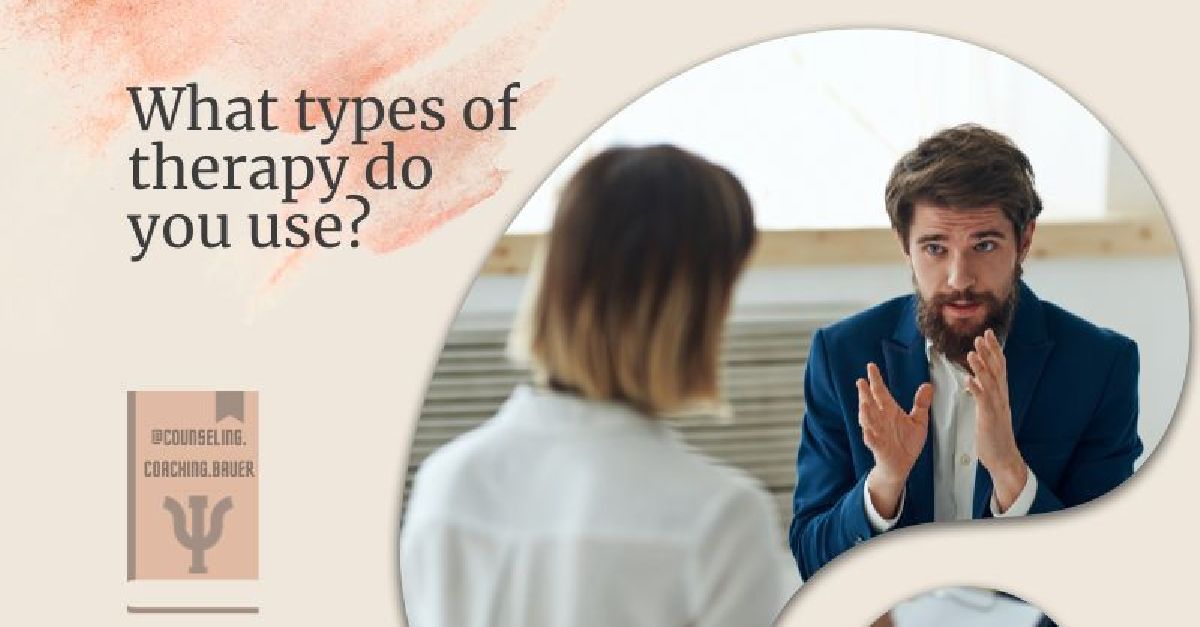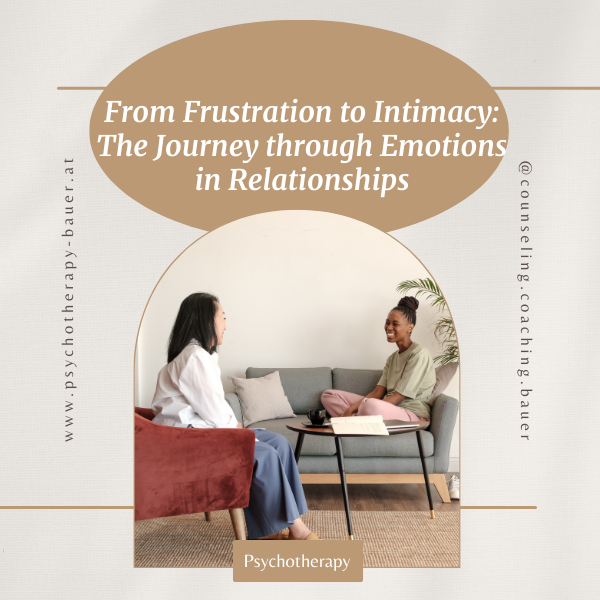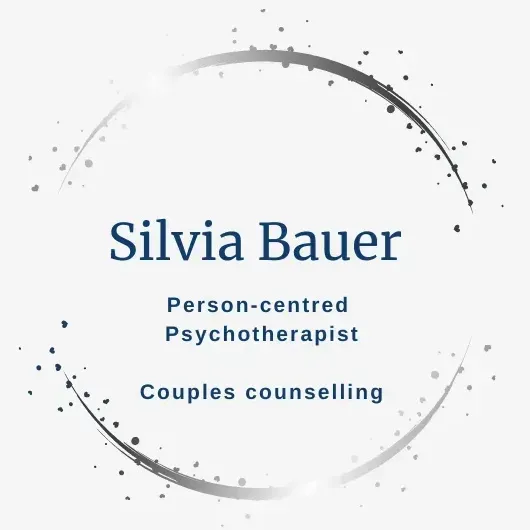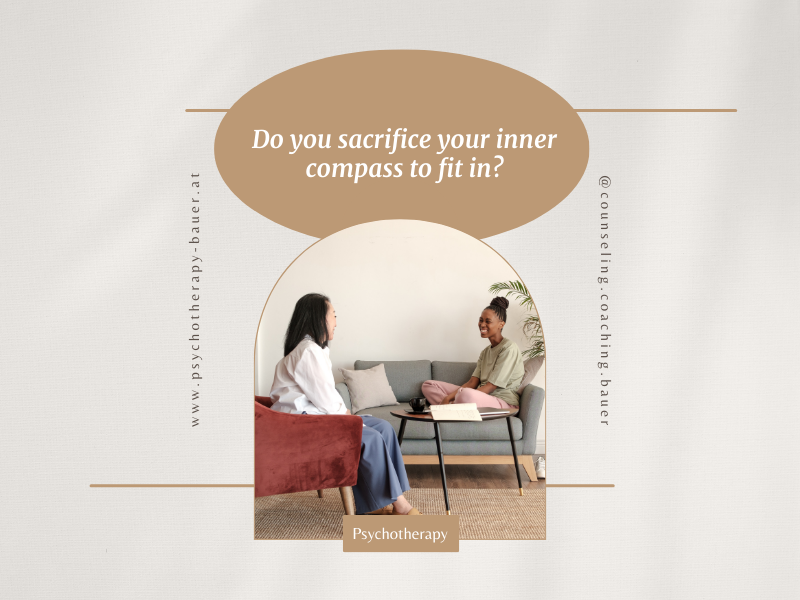What types of therapy do you use?
My understanding of person-centred therapy and EMDR

Some perspectives in the world proclaim that person-centred therapy is just about talking. Some people call it talk therapy. Yes indeed, that’s basically what we do, and yet it’s a lot more. As this understanding of talk therapy sounds very limiting to me and I feel frustrated about it, I want to explain my position.
Similarly, it’s very obvious to many people that EMDR is indicated for trauma. Wherever you ask, you’ll have heard that it’s the guideline treatment for PTSD. Again, that’s right. AND it can do so much more for us than treating single traumatic situations.
So, if you’re wondering what types of therapy I apply that work for you – or even more importantly if my understanding of therapy is in line with how you would like to experience therapy...this blog is for you.
Person-centred therapy – the relationship counts
Recently, I was going to explain EMDR to a client. We’ve been working together for quite a while, and they were shocked about my interference and asked me if we couldn’t proceed the way we used to. I was deeply touched and felt very sorry for the trouble I seemed to have caused. For sure, we could continue working in the person-centred way. There’s no limit to person-centred therapy, and I trust and believe in the person-centred approach and there’s enough scientific evidence to rely on this method. Otherwise, it would not have been released as a psychotherapy approach in Austria and internationally.
Yet, to some people, proposing that the relationship is the healing element might sound too simplistic. You might be wondering: How come this relationship should be ”the medicine” and more often than not it’s been a relationship that caused the suffering we’re trying to deal with in the first place? Well, let’s say, firstly, relationships have the most powerful impact on people. That can affect us for better or worse.
Most, or rather all, of my clients – and myself as well – did not grow up with the ideal experiences of relationships in some way. That has made life slightly complicated or uncomfortable at some point.
How relationship troubles impact our way of being
Can you imagine yourself as a little child?
I guess it’s obvious that our life depends for quite a while on adults taking care of us.
As humans, we’re excellent at protecting the relationship with our caregivers. We adapt as we rely on them for quite a long time – not just to take care of our physical needs like having a safe and comfortably warm home and food, but also intellectually and emotionally.
Most of my clients grew up with sufficient physical care and many of them even with excellent intellectual support. In some way, that’s a great resource, and yet, at times it makes it hard to understand that there could still be something missing.
Emotional child development starts long before humans challenge their caregivers intellectually. And it highly impacts how we relate to our own emotions, as well as to other humans later on. Let’s keep it simple: our blueprint for emotional and relational behaviour is set up pretty early in life.
Let’s go back to the child with highly educated parents who do not relate very much to ”childish fantasies” or ”wasting their time” with their emotions. This child will soon be pretty self-reliant in handling their emotions. That’s for a child as overwhelming as climbing stairs. But for the sake of keeping the relationship with their parents safe and pleasant, they will learn rather sooner than later to shut down their emotions and engage in self-reliant activities.
From the outside, that can look pretty nice – but inside out – you certainly understand how lonely and overwhelmed this little child must be.
By the way, the child also learned that relationships should not be bothered with emotions and that people have to take care of their problems by themselves. Pretty lonely world, isn’t it?
How a helpful relationship enables healing and personal development
Maybe you recognize yourself in this little child when you’re starting with therapy. For better or worse, it doesn’t have to stay like that.
Several people in the history of psychotherapy came up with the same conclusion: In adult relationships, we keep applying the relationship blueprint we learned as a child. The closer and more meaningful the relationship is, the clearer our relationship strategies show up. Are you scared of losing your partner when you don’t know where they are gone? Or don’t you feel anything after they have been acting unreliably? Well, that’s what I mean.
As other people do not always react exactly the way our parents did – there’s a good chance we can heal some of the pain we’ve been suffering from as a child. Unfortunately, our patterns saved our most important relationship in the first place, and therefore we’re not exactly drawn to giving up on them. So, it’s likely we keep recreating our relationship patterns, which then continues our pain as well as feeling left out with our emotions.
To change our relationship behaviour: here’s my secret, it’s very simple: psychotherapy.
In therapy, the counselor looks for and after the inner little child and all the pain it has been suffering back in time. They do try to understand the child and to respond differently than the caregivers did.
Humans are prompted to like what they are used to. That’s why it can be quite a long healing journey: From the originally common way of shutting down uncomfortable emotions, appearing self-sufficient and trusting another human being to be able to stand the discomfort of any upcoming feelings and troublesome behaviour – that takes some time and courage.
That’s all we do in therapy, a bit more consistently than people in the outside world: creating a safe relationship - no matter what.
As a therapist, I am genuinely myself and don’t overly adapt to your caregivers' behaviour that you’re likely to suggest I act upon. I try to understand your world as much as I can, and I am truly honest about how I feel.
That’s all there is. I’m not sure if you’ve expected such a simple answer.
By experiencing and creating this new relationship together, you learn that it’s OK to be and show up as yourself in a relationship. That doesn’t seem much, but it is a whole different way of being – just being yourself and feeling worthy of love and belonging.
It’s a huge step from hiding your true self and adapting to please others to showing up and creating appreciative and mutually interdependent relationships.
At this point, I have said everything that’s required for person-centred psychotherapy to work. That means I could end my blog right here
– and yet the question about EMDR remains.
How come there are further tools involved in creating a therapeutic relationship
Although just experiencing a safe and helpful relationship is enough indeed, there are “things” we can do to amplify the therapeutic process.
We hit back to the point where “talk therapy” is not very precise – we don’t sit and chat like at a coffee house table.
Maybe, most of the time we talk, yes. And sometimes we don’t talk.
Sometimes emotions take over, or silence. At times we talk about (moving) images.
Sometimes we experience body sensations. At times, we shift between body sensations and imaginations.
Sometimes we talk about the little child back in time or the current inner child.
Sometimes we monitor the intensity of emotions and rarely apply some tools to regulate them.
Sometimes we talk about sports, music or games.
Can you see there’s a lot of talking and so much more? The point is not the talk but to create a relationship inside and between people.
Sensations, feelings, and imaginations become more vivid than in the outside world. And language helps us connect the dots and is inevitably an important part of communication.
EMDR – reprocessing negative beliefs independent of language
What do we need EMDR for, then? To be frank, we don’t need it, but it’s nice to have. Besides all that’s so well known about EMDR, like reprocessing traumatic experiences and connecting them to internal resources, there’s another huge advantage that’s not discussed often:
it’s not tied to language.
Of course, it does require language. Yet, during the reprocessing sequences, the mind is free to flow between images, sensations, languages, and emotions however it wants.
To me, it appears like floating through a flow channel in a bath. You’re free to use all dimensions at your natural speed. Nothing standing in the way. I do enjoy that.
Especially if you’re multilingual, you know that language is in some way limiting.
I used to work with a client where we had several common languages and could swap throughout sentences. That’s rarely possible because with most clients I don’t match in more than one language – and sometimes that’s neither the mother- nor the father’s tongue.
So, EMDR allows you to reprocess through all dimensions and especially all languages in real-time. I don’t interrupt your mind’s process, and we don’t need to understand the way the mind tidies up. Still, as we do know each other and have a rough landscape of your inner world, we will understand the topic, and it tends to make sense afterwards.
I see EMDR as an additional way to experience your inside world to a place we may not be able to access in language-bound thinking. Therefore, I see a big advantage in the use of EMDR for clients who speak English or German – as those are my therapy languages but do have significant experiences in another language. Still, I work with EMDR in English, German, and Arabic with an interpreter, but during the reprocessing phase, your mind is free to jump into any language it associates with.
And I can share that in my processes I truly enjoy this language-jumping option.
The healing relationship – focused on people - not language
So, in this blog, I wanted to extend my understanding of therapy and why I use EMDR besides person-centred therapy.
In conclusion, it is evident that the foundation of my therapeutic approach revolves around the significance of the healing relationship. Throughout my counselling practice, I have witnessed the transformative power of person-centred therapy, emphasizing the profound impact of establishing a secure and nurturing connection. This bond, built upon trust and understanding, serves as the core element of healing, fostering a safe space for emotional exploration and growth.
Acknowledging the complexities within the realm of therapy, I have come to appreciate the valuable role of EMDR in facilitating a holistic healing experience. Beyond its widely recognized application in treating trauma-related conditions, EMDR presents a unique advantage by transcending language boundaries. Its capacity to navigate through various dimensions of thought, sensation, and language allows for a deeper exploration of the inner self, unrestricted by the confines of speech. This feature has particularly benefited clients with multilingual backgrounds, enabling a seamless integration of diverse language experiences into the healing process.
As I strive to provide comprehensive support to my clients, I remain committed to the principle that the relationship itself serves as the cornerstone of the therapeutic process. While EMDR serves as a valuable tool in our journey towards healing, I firmly believe that the nurturing connection cultivated through person-centred therapy forms the heart of the transformative experience.
I encourage you to share this article with anyone who might benefit from understanding the impact of a helpful person-centred relationship or the chances of reprocessing traumatic experiences language independently.












